Ranunculus (buttercup): description and varieties, planting and care
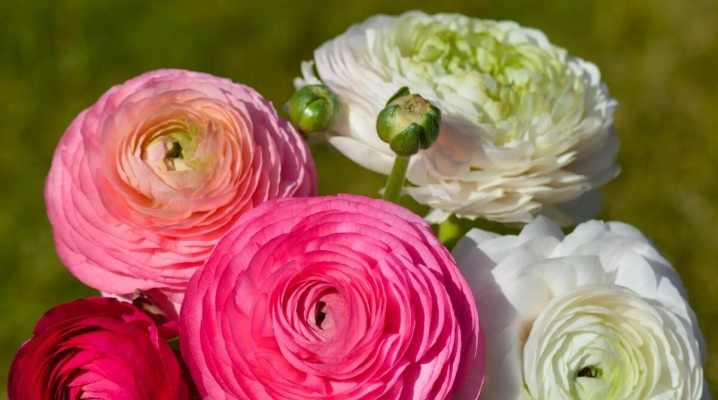
Ranunculus, in wider circles better known as buttercup, is in high demand among gardeners and owners of summer cottages. With its spectacular buds painted in bright colors, the plant is among the top twenty most beautiful flowers on Earth. Let's take a closer look at the description and varieties of ranunculus, and also talk about the intricacies of planting and caring for a plant.
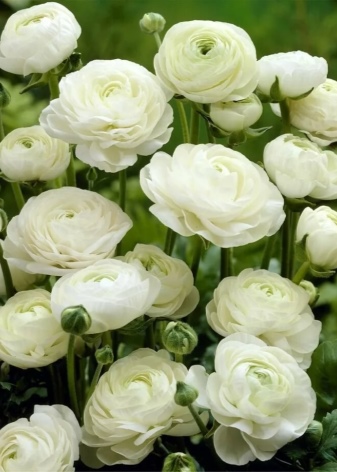

Peculiarities
Buttercup or ranunculus (from Latin Ranunculus) is a genus of herbaceous plants, including both annual and perennial species, and belongs to the buttercup family (from the Latin Ranunculaceae). The flower owes its Latin name (ranunculus) to its love for water, because the word "rana" literally translates as "frog".
The plant has a short fibrous root system with tuberous thickened root shoots and erect shoots reaching a height of 20 to 100 cm. Alternately located dark green leaves up to 6 cm in size can be whole or dissected. The fruit is presented in the form of a multi-root.


Buttercup is characterized by beautiful and very spectacular flowering., which begins in late spring or early summer, depending on the species, and lasts from two to three months. Cut flowers keep well for 7 days. Flowers consist of 3-5 sepals, 5 or more petals with a honey pit at the base and many pistils and stamens. The size of the flowers differs depending on the species and ranges from 2 to 10 cm.
The shape of the buds is also varied: in some varieties it resembles the shape of roses, in others - peonies. There are species with double flowers that look much more interesting than ordinary ones. As for the color of the buds, it is varied and includes white, yellow, fiery, purple, cyan, blue, pink, orange and bright red colors.






The distribution area of ranunculus is in the Northern Hemisphere, and in Russia alone there are more than 40 species. The plant is bred mainly for decorative purposes and has no significant practical application. The only exceptions are a few species, such as caustic, golden and burning buttercup, which are used in folk medicine and alleviate the condition in certain diseases.
A description of ranunculus would be incomplete without mention of its toxicity. The sap of this plant is a great danger to people and animals, corroding the skin and causing severe poisoning.
In this regard, all types of work on planting, dividing the rhizome and weeding the buttercup should be carried out with garden gloves.


Types and varieties
About 600 wild and ornamental ranunculus species are known to modern science, but only some of them are actively used in gardening. Below are the most popular varieties that are in high demand among florists and landscape designers.
- Buttercup pungent (from Lat. Ranunculus acris), better known as "night blindness", is a perennial herb, reaching a height of 20-50 cm. The species is distinguished by bright yellow flowers with a diameter of 2 cm and beautiful leaves. The leaves contain protoanemonin, which is a caustic, volatile, strong-smelling substance that irritates the mucous membranes of the eyes, larynx and nose.Because of it, the plant is very poisonous and requires careful handling.
The flower is used in alternative medicine, where it is used to treat burns, boils, rheumatism, headache and even tuberculosis.


- Kashubian buttercup (from Lat. Ranunculus cassubicus) also refers to perennials and is very poisonous. The plant owes its name to the town of Kashubia, which is located in the northeast of Prussia. There this species was first discovered and subsequently described. Buttercup grows up to 30-60 cm and has single or light yellow flowers collected in a semi-umbrella. In its natural environment, it grows in sparse deciduous forests and copses located in Western Siberia and Europe.

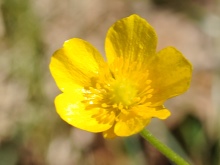

- Goldilocks (from Latin Ranunculus auricomus) is a perennial meadow plant with a bare erect stem up to 40 cm high. The species is characterized by long-petiolate basal leaves with three or five separate wedge-shaped segments, sessile stem leaves and bright small flowers. The fruit is presented in the form of a one-seeded leaflet, the flowering season is from April to June.


- Long-leaved buttercup (from Lat. Ranunculus lingua) is an attractive wildflower, reaches a height of 50-115 cm and has a hollow, slightly branched stem. The plant is distinguished by sessile lanceolate-elongated leaves, gradually tapering upwards, and beautiful flowers with a diameter of 3 to 4.5 cm. The species is listed in the regional Red Data Books of many territories and regions, often found in specially protected natural areas.



- Banewort (from Lat. Ranunculus flammula) - a poisonous perennial 20-50 cm high with a bare erect stem. The lower leaves are long-petiolate, much wider than the upper sessile leaves. Small flowers reach a size of 12 mm, have a single arrangement and are painted in a light yellow color. Flowering lasts from May to September, distribution - the European part of Russia and Western Siberia.
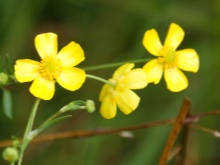


- Buttercup multiflorous (from the Latin Ranunculus polyanthemos) is a herbaceous perennial 25-80 cm high with a straight ribbed stem, which, like leaf petioles, is covered with sparse yellowish hairs. The plant is characterized by bright yellow flowers and round-reversible ovate fruits, which ripen at the end of August.
The plant blooms from June to August, grows in forests, forest-steppe, dry meadows and grassy slopes of the European part of Russia. This type is often used in traditional medicine, where it used to relieve stomach pain, migraine, rheumatism, gout, and also as a wound healing agent for boils.
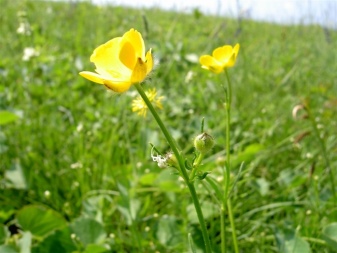

As for the ornamental ranunculus varieties, the most popular are Pink, Red, White, Victoria Orange Shades, Bloomingdale Red Shades and Blooming Valley mix.




Growing seedlings
They begin to sow ranunculus seeds for seedlings very early - in February. This is necessary so that young plants have time to grow up and get stronger before being transplanted to the street.
Soil and capacity
It is convenient to use wooden boxes or plastic containers as containers for seedlings. A prerequisite is a perforated bottom, through which excess liquid will leave. The soil mixture can be purchased ready-made at any flower shop or you can prepare it yourself. To do this, mix sand, peat soil and humus in a ratio of 1: 2: 1, spill the substrate with boiling water or a warm solution of pink potassium permanganate.

Sowing
Before sowing, the soil is leveled, the seeds are laid out on it and sprinkled with a layer of soil mixture no more than 2 cm thick. Then the planting is sprayed from a spray bottle with water at room temperature and covered with film or glass. The greenhouse is placed in a sunny place with a temperature of at least +20 degrees. If all the windows of the apartment face the north side, fluorescent lamps are additionally used.The shelter is cleaned daily and the landing is aired for 15 minutes.
Spraying is carried out as needed, while preventing the soil from drying out.

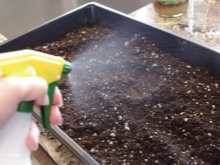

Seedling content
When the first seedlings hatch, the airing time is increased to half an hour, and after 5-6 days the shelter is removed altogether. After 2 full-fledged leaves appear on the sprouts, the seedlings dive into separate peat pots, put on the windowsill and wait for the time to be transplanted into the open ground.
Young plants need 15-hour daylight hours and an air temperature of at least +20 degrees. On warm sunny days, the sprouts are slightly shaded by fixing a translucent screen on the window pane, or the pots are placed in the shade of taller indoor plants.

How to plant in open ground?
Ranunculus is planted in the ground in three ways: seeds, seedlings and rhizomes. The most common are seedling and tuberous methods, which is due to low seed germination and the likelihood of loss of a number of varietal properties. As an experiment, you can try to plant both tubers and ranunculus seeds in the garden, and then compare the result. Plants obtained by the seed method will be much inferior to their tuberous congeners both qualitatively and quantitatively.
In spite of everything, the seed method takes place and is also used for planting a buttercup.

Seeds
Given the low germination rate, buttercup seeds in open ground begin to be planted in the second half of May, when the daytime air warms up to +15 degrees, and the soil temperature is at least +10 degrees. The place for the flower is chosen slightly shaded and without liquid stagnation: the best option would be to sow seeds under a tree with a loose crown. Buttercup does not tolerate transplantation very well, so the choice of a place must be approached very carefully.
The soil for ranunculus should be light, nutritious, well-permeable and pH neutral. Buttercup grows well in black soil mixed with humus and sand. As a disinfection of the soil and to reduce the risk of fungal diseases, the soil in the flower bed is spilled with a solution of "Fundazola". Sowing buttercup seeds in open ground is carried out in dry, calm weather, evenly scattering the seed material over the surface and sprinkling it with a layer of nutrient substrate 1.5 cm thick.
In the future, the planting is moistened as needed and weeds are removed in time.

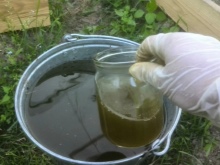

Seedlings
Transplanting seedlings into open ground is performed in calm and warm weather in the late afternoon. An important condition is well-warmed air and earth, otherwise the young plant may freeze. The earth in the flowerbed is pre-dug up and, if necessary, a little humus and fine-grained sand are added to it. If there are lumps, then they must be broken, after which the soil is leveled with a rake and slightly moistened. Then holes are formed at a distance of 15-20 cm from each other and seedlings are placed in them together with peat pots.
If the seedlings were grown in plastic containers, then before transplanting the soil in them is well moistened and the plants are carefully removed along with the earthen lump. Then they are placed in the hole, the substrate is poured, carefully tamped and watered again.



Rhizomes
Ranunculus tubers are sold dried, so they need to be prepared before planting. To do this, they are placed in a solution of pale pink potassium permanganate and kept for 30 minutes. Then each rhizome is wrapped in a wet cloth soaked in Epin's solution and left for 2 hours.
Then the fabric is moistened again, each root is wrapped, put in cellophane and put into the vegetable tray of the refrigerator or any other cool place overnight. If all the manipulations were done correctly, then the rhizomes swell and outwardly resemble octopuses. This shape of the roots indicates that they are completely ready for planting in open ground.
The landing site is dug deeply, manure or compost is added, and with strong acidification, bone meal or lime is added. Pits 7-10 cm deep are dug at a distance of 15 cm from each other, expanded clay and a small layer of sand are poured on the bottom. The rhizome is placed on top with the roots down, sprinkled with a nutrient mixture, tamped and moistened.
The first shoots appear 7-10 days after planting, and after another 70-75 days, depending on the species, the buttercup will begin to bloom.

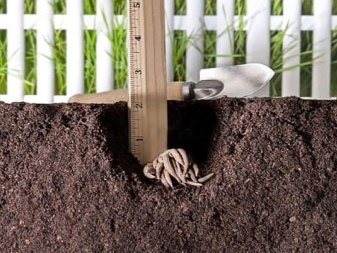
How to take care of it properly?
Ranunculus is an unpretentious plant and quite easy to grow. All agricultural technology consists in observing simple techniques, such as watering, feeding and care during and after flowering.
Watering
Buttercup does not require daily moisture, so you need to water it every 2-3 days. It is important to prevent stagnation of liquid in the root zone, which can lead to decay of the roots, shedding of young buds and an ugly gray-white bloom on the leaves. Water for irrigation is taken settled and slightly warmed up in the sun, since ice water can provoke the appearance of a fungus. It is better to water buttercups in the morning or in the evening, which will protect the green parts of the plants from sunburn.
To prevent rapid evaporation of moisture, the ground around the stem is mulched with straw or dry needles.


Top dressing
To ensure proper growth and lush flowering of ranunculus, you need to periodically feed the plant. To do this, in the autumn, organic fertilizers are introduced into the soil and dug well. In spring or early summer, just before budding, preparations containing potassium and phosphorus are introduced. You can use the drugs no more than twice a month, since an excess of some elements against the background of a shortage of others can lead to a slowdown in flower growth and to a rapid discoloration.
It is better not to lean on nitrogen-containing preparations, as they cause a rapid growth of green mass, which damages budding. Nitrogen is added only at the beginning of the growing season, when the buttercup is just beginning to grow.

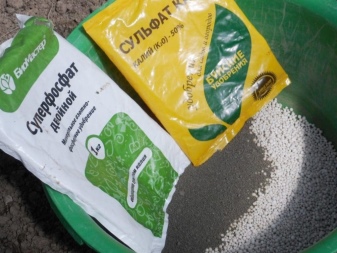
During and after flowering
Most ranunculus species begin to bloom in the second half of May and finish by the end of summer. To keep the buds on the bushes as long as possible, it is recommended to shade the plants slightly. As soon as the bud has faded, it is immediately cut off with a sharp knife, thereby preventing unnecessary waste of flower juices. If this is not done, then further inflorescences will appear in much smaller quantities, and the flower bed will lose its decorative effect.
If necessary, then at the end of flowering, seeds are collected - each box contains about 500 of them, and at the beginning of September the flower stems are cut to the root.

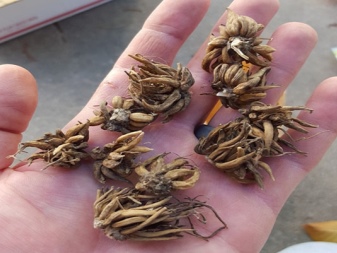
Preparing for winter
Ranunculus does not tolerate cold well, therefore it needs to dig out the rhizomes. To do this, the stem is cut at the root and, before the first frost, the root system is removed from the ground, using a garden trowel for this. The soil is preliminarily well moistened and the water is allowed to be well absorbed. This allows the tubers to be removed without damage. Then the rhizomes are dried for 3-5 days, treated with a fungicide and stored at a temperature of + 10-12 degrees.
If the winters in the regions are not too cold, the night temperature does not drop below 5 degrees of frost, then the rhizomes are left in the ground, covered with straw and any covering material on top. However, experienced gardeners do not recommend leaving the rhizomes in the ground and letting them grow in spring.
The best option is to plant rhizomes just bought or dug out for the winter. This tactic allows you to get stronger and healthier plants that will develop correctly and bloom well.


Reproduction methods
Ranunculus reproduces in two ways - by seeds and by dividing the tuber. Despite the fact that the second is considered more effective, many summer residents prefer to buy seeds of beautiful varieties and successfully grow them on their plots.
Seed method
Sowing material can be bought at the store, or you can collect it yourself. To do this, immediately after the buds wither, the box is tied with two layers of gauze. After the box has dried, it is lightly pressed down and the seeds are poured into cheesecloth.
Then carefully remove the gauze with the seeds and dry them in a dry and warm place. Then they are laid out in paper bags, the variety is signed, the year of collection and put away for storage. However, buttercups grown from "their" seeds will not inherit most of the generic characteristics of the mother, so it is better to use store seeds.
Seed material is planted in seedling boxes (February) or in open ground (May) in the above way and wait for the emergence of seedlings.

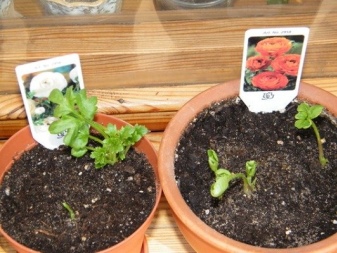
Rhizome division
In autumn, the tubers are dug out of the ground and new groups of growths are carefully separated. Places of cuts are treated with charcoal to avoid decay. Then the cuttings are dried, treated with "Fungicide" and stored at a temperature of + 10-12 degrees. In the spring, the tubers are prepared for planting by the soaking method, at the end of April they are planted in open ground to a depth of 7-8 cm.

Diseases and pests
Despite the fact that ranunculus is a strong plant and rarely gets sick, fungal diseases still occur. If characteristic spots are found on the leaves, watering the flower is reduced and it is treated with fungicides. As for insects, the plant is especially often annoyed by the nematode that infects the rhizome, as well as aphids and spider mites. It is quite simple to diagnose the attack of nematodes - the leaves begin to curl, the growth of the flower slows down.
In such cases, the root system is treated with a pink solution of potassium permanganate, and insecticides are used to combat aphids and spider mites. Good results are obtained by using "Aktellik", "Antiklesh", "Aktara", "Fufanon" and "Fitoverma". As a preventive measure against diseases and pests, it is recommended to treat buttercup with 2% "Mercaptophos". Spraying is carried out 3 weeks in a row with an interval of 7 days.



Use in landscape design
Buttercup is a bright decoration of a flower garden or flower bed and is actively used for landscaping areas. The flower looks spectacular in the composition of flower arrangements that occupy large areas, and is also indispensable for wedding floristry.
A flower bed of several varieties of ranunculus will become a worthy decoration of a summer cottage.

Buttercup looks great in combination with lush greenery and visibly enlivens the landscape.

Vases with bright flowers on a background of grass look very natural.


The floral mix is bright and interesting.

The endless expanses of flowering buttercups look impressive.

For the features of planting buttercups, see below.







































































































The comment was sent successfully.